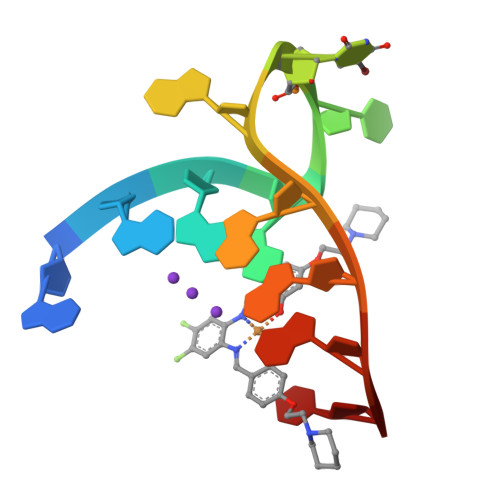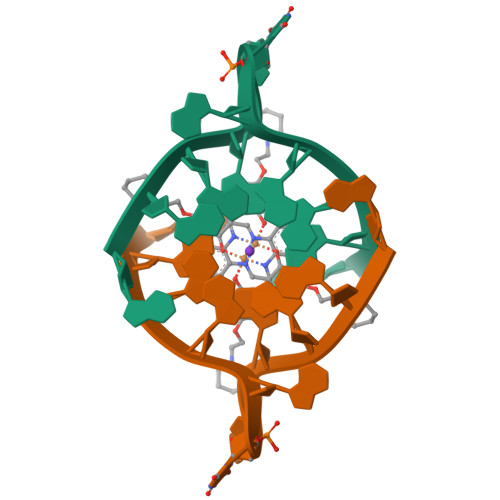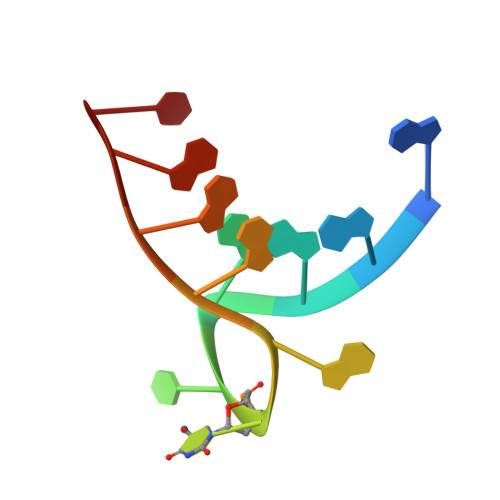Molecular basis of structure-activity relationships between salphen metal complexes and human telomeric DNA quadruplexes.
Campbell, N.H., Karim, N.H., Parkinson, G.N., Gunaratnam, M., Petrucci, V., Todd, A.K., Vilar, R., Neidle, S.(2012) J Med Chem 55: 209-222
- PubMed: 22112241
- DOI: https://doi.org/10.1021/jm201140v
- Primary Citation of Related Structures:
3QSC, 3QSF - PubMed Abstract:
The first X-ray crystal structures of nickel(II) and copper(II) salphen metal complexes bound to a quadruplex DNA are presented. Two structures have been determined and show that these salphen-metal complexes bind to human telomeric quadruplexes by end-stacking, with the metal in each case almost in line with the potassium ion channel. Quadruplex and duplex DNA binding is presented for these two and other related salphen complexes, all with side-chains terminating in pyrrolidino end-groups and differing patterns of substitution on the salphen core. The crystal structures are able to provide rationalizations for the structure-activity data, and in particular for the superior quadruplex-binding of the nickel complexes compared to that of the copper-containing ones. The complexes show significant antiproliferative activity for the compounds in a panel of cancer cell lines. They also show telomerase inhibitory activity in the telomerase TRAP-LIG assay.
Organizational Affiliation:
CRUK Biomolecular Structure Group, The School of Pharmacy, University of London, 29-29 Brunswick Square, London WC1N 1AX, U.K.




















